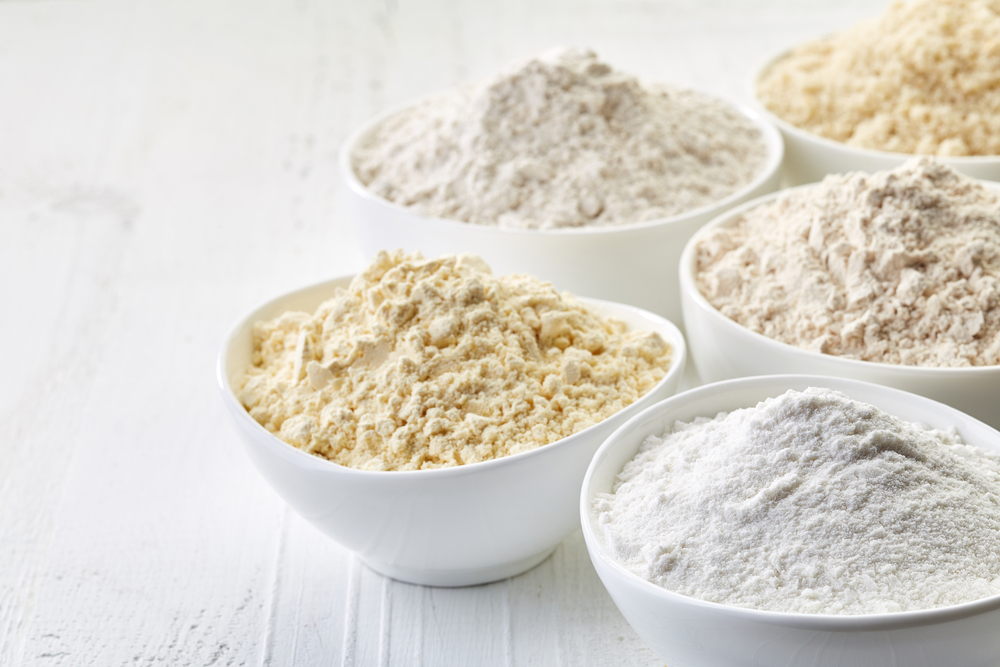7 tips to make your gluten-free baking actually taste good

Let’s just come out and say it — gluten-free baking gets a bad wrap.
Whether it’s a tapioca starch scone that falls into a million pieces once you pick it up, or an overly-dry blueberry muffin made out of potato starch, it can be a challenge to make something gluten-free taste, well, like it’s not gluten-free.
But for those living with celiac disease or gluten intolerance, gluten-free baking is a way of life. And challenges aside, once you know what you’re doing, baking without gluten can really feel like a triumph.
So what exactly is gluten? Gluten is a family of proteins found in traditional flours like wheat, rye, spelt, and barley. It what makes the flour bouncy and elastic. Just visualize someone stretching pizza dough, and you’ll get the picture.
Whether you’re new to gluten-free baking or have been on the bandwagon for a while, here are some surefire tips for creating something that will trick even your best bread-loving friends.
Flour power
Novice or seasoned pro, gluten-free bakers inevitably need to know about a whole bunch of random flours you’ve probably never heard of. You’ve probably heard of coconut flour by now, but millet flour, sorghum flour, amaranth flour, buckwheat flour? Consider them the new best friends of your gluten-free repertoire.
Note that although you’ll find no shortage of all-in-one gluten-free flour on the supermarket shelf, one of the best ways to experiment with gluten-free baking is to buy the individual flours on their own.
Mix it up!

Gluten-free flours/Shutterstock
Which brings us to our next point. Now that you’ve got a bunch of gluten-free flours on hand, make sure you’re mixing the ratios up to see what works and what fails. Spoiler alert, you will probably end up making a lot of disappointing first batches. But that’s why it’s so exciting when you finally pull it off!
Mixing multiple flours together can seem daunting at first, but there are a bunch of great resources out there to lead you in the right direction for ratios.
Less is more
If you haven’t experienced the challenge of gluten-free baking before, we have another plot reveal for you: gluten-free baked goods crumble (a lot).
But a really good workaround for this is to bake things smaller than you normally would when using gluten. Pancakes, cookies, and loaves of bread — make them in small sizes so that even though they don’t have the binding agents that gluten does, they won’t fall apart.
Turn the heat down

Gluten-free rice flour pancake/Shutterstock
Because some gluten-free flours are made with such a different structure than traditional wheat flour, some of them tend to burn a lot easier. Case in point — coconut flour. If you’re cooking with coconut flour, make sure you heat your saucepan to about half the level you usually would (because no one likes a burnt pancake).
Don’t neglect the gums
No, we’re not talking about your dental hygiene. If you want to take your gluten-free baking to the next level, finding a substitute for the elasticity that gluten naturally provides is a game-changer. This is mainly found in xantham gum or gelatin, or for a vegan alternative, try agar-agar.
Be careful with contamination

Kneading flour/Unsplash
If you have a serious gluten allergy or are cooking for something who does, know that making sure your surfaces aren’t getting cross-contaminated is an important step to keeping everyone healthy.
If you’re sharing a kitchen with someone who eats gluten, make sure your surfaces are kept super clean, or even have designated chopping boards, utensils, and toasters that are kept separate.
Nothing like a good book
If you’re new to going gluten-free, you might be overwhelmed with all of the options for recipes out there, but once you find a good resource you resonate with, you’ll have a designated go-to you can rely on for all your future baking. The more recipes you try, the more confident you’ll get.
If you’re looking for even more pro tips for how to take your gluten-free baking (and cooking) to the next level, there’s no better event than the Vancouver Gluten Free Expo 2020. It’s happening on Saturday and Sunday, January 11 and 12, from 10 am to 4 pm and is Canada’s biggest gluten-free event.

Gluten Free Expo/Facebook
Whether you’re after a cooking demonstration or a place dedicated to strictly gluten-free products, this is the one event for all your needs. Don’t miss out — get your ticket today on Eventbrite!


